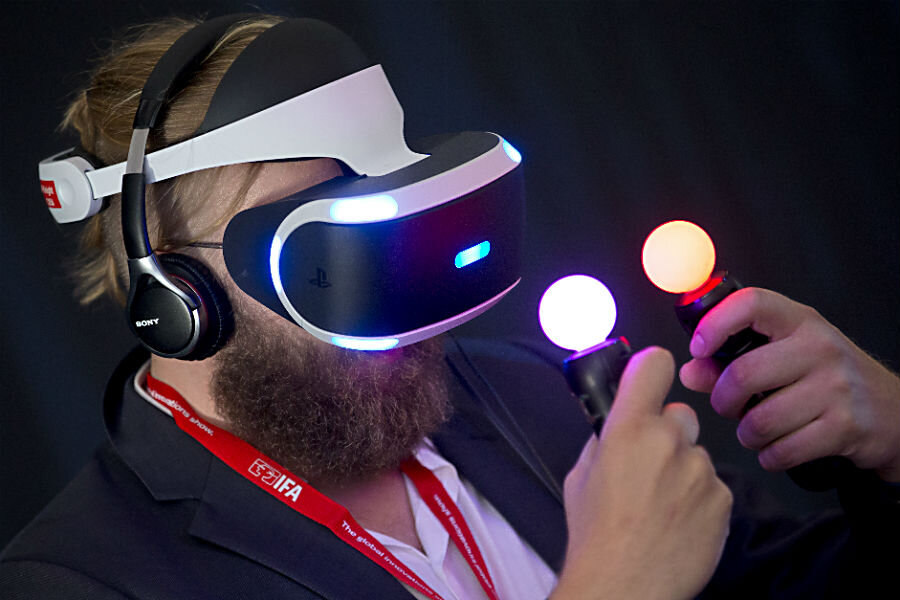Is Google taking VR headsets to the next level?
Loading...
Google is making fresh inroads into the increasingly crowded field of virtual reality (VR) headsets.
But unlike most other offerings now on the market – or soon coming to market – Google is developing a standalone product, without the need for a smartphone or a high-end PC to power it.
The move represents the next step in Google’s VR evolution, taking it beyond the $20 cardboard offerings that have lately been shipping out to customers, but some believe it moves the company further into the realm of augmented reality (AR), in which computer generated imagery is integrated with real-world imagery.
“Google’s planned stand-alone headset appears to aim for a middle ground: a quality experience not tethered to an expensive PC or game console,” write Jack Nicas and Alistair Barr in The Wall Street Journal, where this story was first reported. “Still, it is unclear whether many consumers are willing to pony up for another entertainment gadget.”
Virtual reality is still a nascent technology. Alongside Google Cardboard, there is Samsung’s Gear VR, both of which require smartphones. Higher end headsets, such as the Oculus Rift and HTC Vive, plug into expensive PCs.
Current rumors describe a truly all-in-one device that would simplify the VR experience.
“The headset will include a screen, high-powered processors and outward-facing cameras,” reads the report. “Google plans to use chips from startup Movidius Inc. that use the cameras’ feeds to track the motion of the user’s head.”
But this mention of outward-facing cameras has some people questioning whether Google’s new technology is, in fact, VR, or whether it may be something of a hybrid.
“Although the [Wall Street] Journal casts this rumored device as a VR headset,” writes Jared Newman in PC World, “the mention of outward-facing cameras and motion tracking sounds like it might try to straddle the line between virtual and augmented reality.
“To achieve both, it’s unlikely that users will have all the necessary technology built into their smartphones, which may explain why Google is considering a standalone headset instead.”
Whereas virtual reality involves an entirely simulated environment, augmented reality integrates views of the real world with other layers of computer-generated information, such as video, graphics, or sound.
In other words, rather than replacing the real world with a virtual one (VR), augmented reality works by “enhancing one’s current perception of reality,” as Mashable explains.
But wearable AR is itself a technology only just beginning to emerge, with various obstacles yet to overcome, as Movidius CEO Remi El-Ouazzane wrote in Wired:
“In particular, minimizing the power and heat dissipation of wearable devices is key to enabling the adoption of such systems by consumers especially with the constraint of small-form factors required for wearable systems.
“A short battery life limits the experience of wearable device. If consumers have to take off their watches or glasses more than once a day to charge it, that’s going to limit how often they’re willing to use it. Beyond the nuisance that comes with recharging, AR based applications are known to consume a significant amount of battery life.”
Certainly Google, or Alphabet Inc., as the parent company has renamed itself, believes there is a future in this realm, making its initial foray into AR with its recently discontinued Google Glass and naming its first VR chief, Clay Bavor, just last month. And they are far from alone.
“What’s pretty clearly evolving here is a platform war,” said Macquarie Capital analyst Ben Schachter. “Some of the smartest people at Google are moving into” virtual reality.






